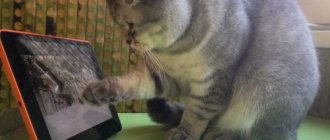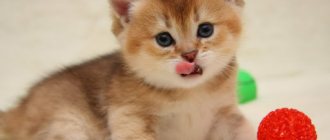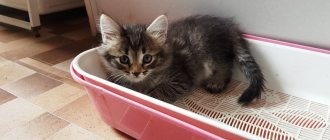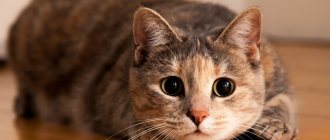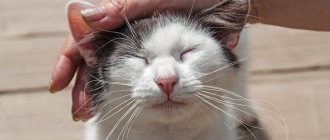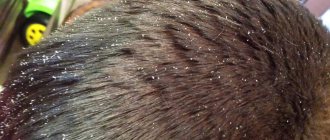Onychectomy, or soft paw surgery as it is often called, is a simple but very crippling procedure. Its essence is the amputation of the last phalanx on the cat’s paws. There are claws there. Owners bring the animal to the veterinary clinic, fearing for furniture, things, and also to avoid scratches.
From a surgical point of view, the operation is easy to perform: the preparation is simple, few stitches are required. But the animal experiences unbearable pain, so the intervention is carried out under general anesthesia using sedatives, hypnotics and painkillers.
These substances negatively affect the cat's heart: they can cause cardiac arrest or even death. And anesthetics are not the only danger from soft paw surgery for a cat. Therefore, loving owners are looking for another way out.
“Soft paws”: pros and cons
“Soft paws” is an operation that owners mistakenly perceive as a simple solution to the problem of sharpening claws and scratching. Therefore, the advantages include the preservation of the furniture, the absence of scratches and the fact that there is no need to trim the nails.
There are many more disadvantages.
If the owner cares about the condition of the furniture and the cleanliness of the house, we warn you: due to the operation, many cats stop using their toilet. The animal will begin to shit anywhere. This is much worse than a small scratch.
The operation affects the cat's health:
- General anesthesia can lead to illness in your pet and even death.
- Due to changes in the structure of the skeleton, the animal may remain lame for life, and arthritis often occurs.
- Due to the lack of claws, the cat will not be able to slow down after a jump. This can lead to falls and serious injury.
- A cat will not be able to protect itself from other cats and animals in the country or if it accidentally ends up on the street.
- If the surgical technique is performed incorrectly, repeated surgery is possible.
Having weighed all the pros and cons, it is easy to understand that onychectomy is unsafe both at the time of implementation and during the subsequent period of the animal’s life.
Care
After the procedure, the owners need to look after the cat for several hours. The method is very painful, to return to normal life you will need care and concern for your pet:
- If the doctor prescribed painkillers in the form of a liquid solution, then it is better to buy a device for their administration. If the tablets are prescribed, read on to learn how to give them to your cat.
- Provide a comfortable bed, do not allow him to walk or jump.
- The postoperative period is 2-3 days. During this time, the bandages are not removed and the cat must wear a special collar.
- Instead of litter, use soft toilet paper to prevent the cat from digging in the litter tray with sore paws.
- These days the pet is in a separate room, box, or cage. There you need to move a bowl of food and water.
- Be sure to keep your paws clean. Wipe them with a soft cloth.
The animal usually recovers completely within 10-12 days. After this, the cat still requires additional attention.
An excellent alternative to onychectomy is regular cat claw trimming. Read how to do it right.
But my cat scratches
In many countries, onychectomy is prohibited. In Russia, a ban on cutting off part of a cat's paw has not yet been introduced. But humane veterinary doctors in the Russian Federation do not carry out the procedure, since there are no direct indications. Finding good specialists who will perform the “soft paws” operation in St. Petersburg is almost impossible.
Scratching isn't the only problem. It is worth remembering that a cat not only scratches, but also bites. A bite is much more painful than a scratch. Therefore, the owners will not be able to completely rid themselves of injuries.
So what makes us bring our pet to the clinic? Is this really a necessity or more of a false security imposed by society? Let's try to determine the root cause of the problem to understand whether it is possible to do without surgery.
The cat broke its paw, what to do at home
If there is a suspicion that your pet has a fracture, it is important not to panic, not to feed the animal with available medications and not to solve the problem yourself by providing first aid.
How to remove ticks from a cat at home
If your cat suddenly breaks its paw, you need to immediately take it to a veterinary clinic. If the fracture is open, the first step is to stop the bleeding. The arterial is stopped with a tourniquet, and the venous with a bandage, making a bandage.
Note! The injury itself cannot heal.
A small kitten broke its leg, what should I do? You will have to transport the injured pet to the hospital, preparing a hard sleeping place. It is best to apply a bandage to the injured paw.
So what to do if your cat breaks his paw?
First, you need to call the clinic where your pet will receive qualified medical care and make an appointment. First, they will diagnose you using x-rays and prescribe appropriate therapy.
Limb fixation
After calling the clinic, the animal will be transported. When providing first aid, they try to properly immobilize the limb by applying a tight bandage, splint or bandage. If there is a fracture of a cat’s paw, especially the front one (regardless of the exact location of the damage), possibly with displacement, then you need to carefully immobilize the cat’s paw, fixing it. The main thing is not to cause associated injuries and not to worsen the existing problem.
At home, a splint is made from a hard material (you can take a plastic or wooden object) and secure it tightly with a bandage.
Note! If a cat with an injury is aggressive, you should not even try to fix the broken leg; you need to put him in a carrier and bring him to the clinic.
To transport a cat to a veterinary clinic, you need to place it in a rigid transport container and close it. It is important to use a hard surface, especially if spinal fractures are suspected.
Why does a cat tear up furniture and wallpaper?
A cat's claws grow continuously, like human nails. Only you and I can take scissors or go for a manicure. Animals have it more difficult. Therefore, in order for a cat to stop spoiling the interior that is dear to the heart and wallet, you need to figure out why she does this.
Zoologists have identified 3 main reasons for scratching surfaces:
- A cat scratches surfaces when it wants to shorten its claws;
- Scratching is a way of marking territory: the cat secretes gland secretions from the pads of its paws. Only cats feel the smell; humans are insensitive to the secretion;
- Scratching helps the animal to remain calm and feel comfortable in its territory.
We have already written that after surgery, many cats stop using the litter box. This is due to the fact that they need to mark their territory. If previously an animal could claim its rights with the help of a secretion in its paws, the smell of which people cannot smell, after onychectomy they do not have this opportunity. But the instinct remains.
The cat begins to mark as best it can. For the owner, it looks like the pet is shitting anywhere.
When is surgery needed?
There are many reasons that will determine how to treat a fracture in a cat. The most important of them are the general health of the pet, the age of the pet, the type of injury and what bones it broke. At times, for injuries to the hind legs, a fixing bandage or splint is sufficient. If surgical intervention is still necessary, then a screw, pin (metal rod), wire or metal plate is installed into the cat’s bone to hold the bone fragments.
Treatment of injury is most often surgical; it includes fixation of bone fragments and ensuring stable preservation of the functions of damaged tissues. After surgical intervention, doctors prescribe therapeutic measures aimed at eliminating inflammation around the injury, healing and restoring the general condition.
Fracture treatment
Caring for a cat after surgery
During recovery, limit physical activity (including walks), visit a veterinarian as prescribed, give the cat vitamins, or, if the doctor recommends, switch the animal to health food, which helps restore bone tissue and regeneration.
If the veterinarian has applied a splint, cast or bandage, the owner must constantly monitor the bandage so as not to cause complications in the animal. The dressing should normally look like its original condition and be completely dry. Also, the condition of the tire is examined by a veterinarian at least three times a month.
Note! After visiting the veterinarian, the main thing is to follow his instructions. Also, after the cast and wires are removed, you need to allow time for recovery. According to experts, this may take more than a month. Recovery is monitored using radiography.
What to do instead of surgery
Veterinarians and zoologists have long understood the problem and found solutions that can help avoid surgery and keep the interior intact. To protect yourself from scratching, you can use safe methods designed for cats:
- Trimming the dead sharp tips of the claws. This will reduce the need to regularly sharpen the claws on all accessible surfaces.
- Silicone stickers on claws. They are attached with special glue like false nails. Protect the owner from injury. But the animal does not lose the ability to slow down in a jump and secrete a secret to mark its territory.
- Training to use a scratching post. Sometimes a cat just needs to sharpen its claws for peace of mind. Such is the nature of a cat. Just show your pet where it can be done: the same way you trained it to use the tray.
All methods are painless and harmless to the cat and do not cause discomfort. If you spend a little more time on your animal, you can easily do without a mutilating and dangerous operation.
Veterinary doctors do not perform onychectomy or soft paw surgery. But if your cat scratches, contact us for a consultation. We will find the cause of the problem and help you fix it.
Types of fractures in cats
Due to a fracture, the anatomical configuration of the bone changes: it is damaged and loses motor activity (in whole or in part). Veterinarians distinguish between acquired and congenital fractures. The latter account for no more than 5% of all requests. Congenital lesions are diagnosed in kittens. They usually occur when pressure is applied to the abdominal cavity of a pregnant cat (for example, due to careless handling of the pet, blows), as well as due to intrauterine anomalies. Acquired fractures are observed in newborn kittens (for example, as a result of obstetrics), as well as in adult cats. They are usually caused by falling from a great height or being hit by heavy objects.
Classification of fractures in cats: • Open . They pose the greatest danger, since the wound can become infected with pathogenic microorganisms. • Closed . They differ in that the bone is broken, but is under the skin, so it is not visible. The paws can break at one or several points at once (multiple fracture). The latter usually occurs when a pet falls out of the window of a multi-story building or a tall tree, especially when the animal hits branches, ropes and other obstacles when falling.
Causes
If we are talking about a congenital fracture, then its cause is strong contraction of the uterus during childbirth or rapid (inaccurate) extraction of the fetus during cesarean section. We strongly do not recommend giving birth to a cat yourself - contact a specialist to avoid unwanted consequences. Common causes of fractures in adult pets: • bruises, • blows, • pinched paws and subsequent improper release, • road accident injuries, • falls, • accidental household injuries. In cats, pathologies of the musculoskeletal system can be diagnosed, in which spontaneous fractures are possible even with slight pressure on a bone that has already lost its anatomical strength.
Complications and consequences
POSSIBLE consequences after declawing surgery in cats:
- Infections;
- Inflammation and swelling;
- Temporary lameness;
- Deterioration of coordination;
- Back pain and arthritis;
- If you give your cat a lot of medicine, it will “waste” the liver, kidneys and stomach;
- Claws may grow inward, which will require additional surgery;
- In very rare and severe cases, death due to drug intolerance or heart failure.
In addition to the listed consequences, surgery, like any other intervention, affects the moral character of your pet.
IMPORTANT: These are POSSIBLE, but NOT NECESSARY consequences.
How does soft paw surgery work?
Before removing a cat's claws permanently, owners must understand the full responsibility for the consequences. The operation (onychectomy) is performed in a clinical setting under general anesthesia.
Not only the claw is removed, as many owners assume, but the entire phalanx (outer part of the finger). This action is accompanied by a large loss of blood.
After amputation, sutures are placed on the remaining fingers. The incisions are treated with antiseptic agents.
Establish a complete ban on onychectomy
A multi-layer bandage is applied to the limbs to prevent infection.
At the end of the event, the patient is given an injection to wake up from sleep and reduce pain.
No self-respecting veterinarian would perform such an operation.
Diagnosis of a fracture
The initial stage of treatment is diagnosis. The veterinarian examines and gently palpates the damaged area, then sends the pet for an x-ray examination. It allows you to make a diagnosis with 100% confidence, as well as establish the nature of the fracture (chip, crack, fracture). If necessary (for example, if other diseases are suspected), the specialist prescribes additional laboratory tests - general tests: • blood, • urine, • feces. Based on the diagnostic results, the veterinarian prescribes treatment.
Rehabilitation period
How long the recovery phase will last depends on the severity of the fracture, the general condition and age of the cat. In young individuals, it usually lasts three weeks, with a maximum of 30 days. In an old cat, the healing process is longer - 35-40 days.
To monitor proper fusion of the bone structure, your pet should be taken to a veterinary surgeon for a monthly check-up.
In order to restore the motor function of the damaged limb, elasticity and muscle tone, manual massage should be performed, the technique of which will be introduced by the veterinarian. Daily massage procedures stimulate blood circulation, healing of periosseous tissues, and accelerate the process of bone fusion.
A cat's diet should be balanced, nutritious and easily digestible. The animal needs foods enriched with phosphorus and calcium. However, we must remember that an excess of these components often leads to the formation of stones in the gall bladder and kidneys.
Vitamin and mineral supplements will also help speed up your pet's recovery, but they can only be given after consultation with a specialist. The veterinarian prescribes vitamins based on the animal’s needs.
General information
Onychectomy is not just “cutting the cat’s claws forever”, it is more like amputating the phalanges of the paws.
There are several options for performing the operation:
- Surgical declawing of a cat using a scalpel and scissors under general or local anesthesia.
- Modern method of declawing using laser.
- Separation of connections between tendons and claws. As a result, the cat’s claws will not grow, or, on the contrary, they will grow too quickly, which happens extremely rarely.
Upon completion of the operation, the animal is injected with painkillers and sent home.
TIP: The best age at which the paws will heal as quickly as possible is considered to be up to 1 year, but not less than 8-9 months. At a younger age, they are not yet fully formed, but after that, the nails are already harder.
How is the postoperative period going?
As a rule, after osteosynthesis, the cat remains in the hospital for 6 hours to 24 hours under the supervision of doctors. Then, suture treatment and painkillers are usually prescribed for 3-5 days. We recommend restricting movement for 4-6 weeks (cats can be placed in a large cage). The cat usually begins to lean on its paw 3-5 days after surgery.
After 3-4 weeks, you will need to visit the veterinary clinic with your cat again to take a control x-ray to assess the speed of fusion. On average, the rate of fusion, depending on the complexity of the fracture, varies from 2 to 8 months. After fusion, with the exception of rare cases (intra-articular fractures, fractures of the pelvic bones, very complex fractures in which the fixing elements firmly grow into the general mass of callus), metal structures are removed.
Conservative therapy
Conservative treatment is prescribed for closed and uncomplicated fractures. The first stage is local anesthesia, the second is the extraction of bone fragments. The procedure is completed by applying a plaster cast to prevent disturbance to the damaged area. The veterinarian makes sure that the bandage secures all nearby joints, but does not put pressure on the limb or internal organs. A veterinary clinic in Moscow uses lightweight polymer gypsum plates, applied for a period of 15 to 40 days. To prevent inflammation, your doctor may prescribe corticosteroids. If necessary, painkillers and sedatives are prescribed. They will help the animal’s body recover faster and also promote accelerated bone tissue growth. Additionally, physiotherapeutic techniques can be used to ensure accelerated recovery of the pet. On average, about 75-80% of cats recover with non-surgical treatment and without going to a surgeon.
